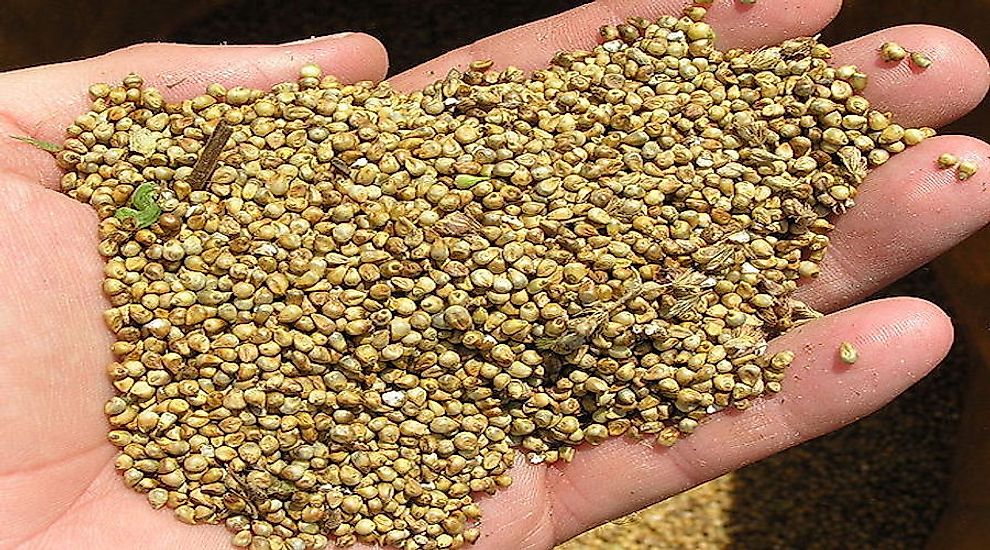The Leading Millet Producing Countries In The World

What Is Millet?
Millet constitutes a variety of small-grained, warm-weather, annual cereals that are part of the grass family. These crops are highly drought tolerant in nature. Millet is grown widely around the world for use as food and fodder. Millets are important crops in the semiarid tropical regions and are indigenous to many parts of the world. For centuries, millets have served as an important staple in parts of Asia and Africa. The crop has been cultivated for at least 10,000 years in East Asia.
Production Of Millet
Millet is a popular crop in the countries of Africa surrounding the Sahara Desert region. The high drought tolerance capacity of the crop allows it to be cultivated in the adverse conditions of the ecoregion. In places where soil fertility is high and there is an optimum availability of moisture, the millets give a higher yield than in areas where these conditions are limited. Often, the countries growing millets, especially the less developed nations, exchange the millet varieties with each other to obtain higher yields.
The world’s leading producer of millet is India. In the 1970s, nearly all of the millet crops harvested in the country were used for domestic consumption. Over the years, the millet production increased in India but the per capita consumption decreased to 50 to 75% of the consumption in the 1970s. Since 2005, millet has ceased to be food for the people of India and instead has been harvested for use as animal fodder and to prepare alcohol. Farmers growing millet a tried to adopt several measures to encourage people to consume millets but such efforts have yielded little results. 0.83 tons per hectare was the average yield of millet crops worldwide in 2010. France hosted the most productive millet farms in the world.
Nutritional Content of Millet
Raw millet has 73% carbohydrates, 11% protein, 9% water, and 4% fat. Millets have traditionally been used to brew millet beer in a few cultures. The cereal grain acts as a major food source in the world’s semi-arid and arid regions. In the parched landscape of western India, millet flour and sorghum has been mixed to be used to make a traditional flat bread that is a staple of the people living there. In South India too, millets are used to prepare traditional dishes. Chinese, German, and Russian cuisines use millet porridge as a traditional dish that is consumed with meat or vegetables.
The per capita consumption of millets is the highest in the countries of Western Africa. In the Sahel region countries of Gambia, Burkina Faso, and Chad, 35% of the total cereal consumption contained millet. In Niger and Namibia, 60% of the cereal consumption involves millets while the cereal accounts for 40% of the cereal intake in Mali and Senegal.
Millet lacks gluten and can be consumed by those affected by gluten-related disorders. However, millet grains might be contaminated with other gluten-containing cereals. Seeded bread uses millets while the cereal is also used to feed livestock and birds.
The Leading Millet Producing Countries In The World
| Rank | Country | Production (Tonnes) |
|---|---|---|
| 1 | India | 10,910,000 |
| 2 | Nigeria | 5,000,000 |
| 3 | Niger | 2,955,000 |
| 4 | China | 1,620,000 |
| 5 | Mali | 1,152,331 |
| 6 | Burkina Faso | 1,109,000 |
| 7 | Sudan | 1,090,000 |
| 8 | Ethiopia | 807,056 |
| 9 | Chad | 582,000 |
| 10 | Senegal | 572,155 |
| 11 | World | 29,870,058 |











